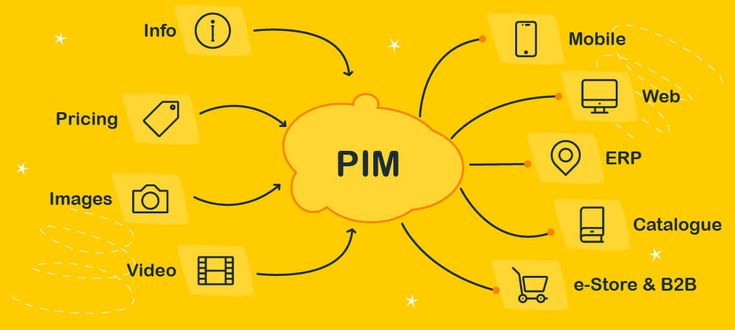What Is Product Information Manager (PIM): All You Need to Know Is Here

Have you recently come across a lot of references to PIM, and you are curious as to what makes it so significant? Or how PIM for eCommerce is influencing changes in the B2B and B2C spaces.
As it is right now, it seems that more than fifty percent of the product-centric firms located all over the globe will use PIM by the year 2021 to provide an amazing customer experience with their products.
But what exactly is the PIM? By reading this article, you will learn all there is to know about PIM for eCommerce and the features it offers.
What Is PIM
PIM, which stands for "Product Information Manager" and should not be confused with "Personal Information Manager" or "Pym Particles," is a piece of software that may be used to construct a centralized hub for the storage and management of all of your organization's product information data.

Even though the phrase "Product Information Management" has been around for a good number of years now, it didn't start picking up steam until after the year 2003. In light of the meteoric growth in the number of online shops in recent years, it is difficult to conceive of an eCommerce platform that does not have a PIM system.
If you are a manufacturer or distributor, you must already be aware of how time-consuming and difficult it is to develop and manage product information such as the photos, titles, product descriptions, and specs for both your online and offline product catalogs.
At the time of giving over such a large quantity of data, there is also the laborious work of formatting the information following the specifications provided by your customer. PIM is a useful tool that may streamline not just one procedure but many others like it.
PIM obtains and stores the product attributes from a variety of sources, including ERP systems, data suppliers, procurement systems, marketing teams, product suppliers, and warehouses. It then distributes this information to a variety of eCommerce channels, including an online store, a marketplace, a mobile application, print catalogs, and POS (point of sale), amongst others.
| Get Started Now to Grow Your Online Business with the Best AliExpress Dropshipping Tool - DSers! |
You and the rest of your team will have access to a unified user interface that will allow you to change and manage a variety of data, including the product title, specifications, SKU number, photos, and videos, among other things. This massive amount of product data may be easily shared both within teams and outside with wholesalers, retailers, suppliers, and consumers.
Now, if you are wondering what more you can gain from preserving better product information for your product or catalog in addition to saving and sharing, here are a few use cases that may help you answer that question.
Use Cases for PIM
- Simple expansion into new areas and the ability to manage different channels of marketing.
- Provide a wonderful experience with the product in an uncomplicated manner; decrease the number of wrong product orders, which will ultimately enhance conversion rates.
- Act as a repository of information and interface with the software of other companies.
- Marketing is more efficient and less difficult.
Who Requires a PIM System
A PIM system often contains several different applications and may be used by a wide range of users inside an organization, or even by all of the users along a supply chain. The following are examples of typical users of a PIM system:
Suppliers
Using the Product Information Management system, a provider may update or alter the information on a product and then communicate that information with either his or her customers or with retailers and brands.
Marketing & Sales Team
These groups continuously offer product information in the form of features that capture the reader's attention or photos that are shiny and appealing. They need a PIM system so that they may add information, and also so that the information can remain consistent throughout the many different marketing channels that they use.
eCommerce Managers
A PIM is used by managers working in the eCommerce market to get a better understanding of the influence that the quality of product data has on online sales.
Data Teams
Data teams use PIM to ensure that the data meets compliance needs.
Customer Support
The customer support staff must have a PIM system to monitor the flow of client complaints or comments and relay this information to the product development team.
R&D Department
They may utilize it to store technical information like CAD/CAM drawings and product specs.
Although the users described above are likely to be the most popular ones to use a PIM system, the actual utilization of the system varies from one firm to the next.
Data a PIM Has Access to
A PIM may be used to handle a variety of data types, the most popular of which are as follows:
Technical Data: It refers to the essential characteristics of the product, such as its dimensions, weight, material, color, and components.
Usage Data: Product explanations such as instructions or ideas on how to use it in a sentence.
Emotional Data: It may be anything about the product, such as a tale or a description, but it serves the purpose of establishing an emotional connection with the consumers.
Media Data: Any media data like music, video, or a picture.
Benefits from a PIM System
PIM is used in a variety of different ways by different companies, as was just described. While the prerequisites and applications are different for each, the advantages are universal. The following are some of the advantages that may be gained by including a product information management system in an online retailing platform:
Unified Customer Experience
If you are a manufacturer or a brand that needs to dive through thousands of products and ensure that all of the product information across multiple channels is in line, you probably already know that doing so manually is a laborious task and that it takes a lot of time. Automating this process can save you a lot of time and effort.
A PIM system may make this process much easier to manage. You may also make certain that all of your consumers, regardless of the channel they use to interact with you, get a consistent experience. In addition to this, it enables you to quicken the pace of your marketing operations while you are on the go.
Controlled Content Distribution
When you have a PIM in place, you will have the ability to restrict the quantity of material that is shared with your customers and merchants.
For instance, if you are in the business selling uniforms and exchange product descriptions with a number of different shops, you may simply restrict the amount of information that you want to share with those retailers in order to differentiate your website from the websites of other retailers.
You may also choose to restrict the information that is shared between your favorite merchants and other parties by providing superior or more product information, photos, or other characteristics.
More Productivity in less Time
The majority of manufacturers, retailers, and distributors work together with their partners and suppliers to find more productive methods to cut down on the amount of time wasted on mistakes and jobs that involve repetitive motions.
You may successfully minimize the time spent on manual data entry activities by automating the repetitious process of exchanging high-quality data. As a result, you will soon have more time on your hands to focus on other projects that demand your attention.
Integrated Newer Technologies
There is a significant need for structured data as a result of the rapid rate of change in the B2B and B2C eCommerce arena brought on by the introduction of more recent technologies such as artificial intelligence and augmented reality, amongst others. A Product Information Management system (PIM) serves as a foundation technology to fuel such technological advancements by easily delivering the needed product data that has been accumulated over the course of time.













 Company
Company
 Why Choose DSers
Why Choose DSers
 Blog
Blog
 Help Center
Help Center




 Live Chat
Live Chat